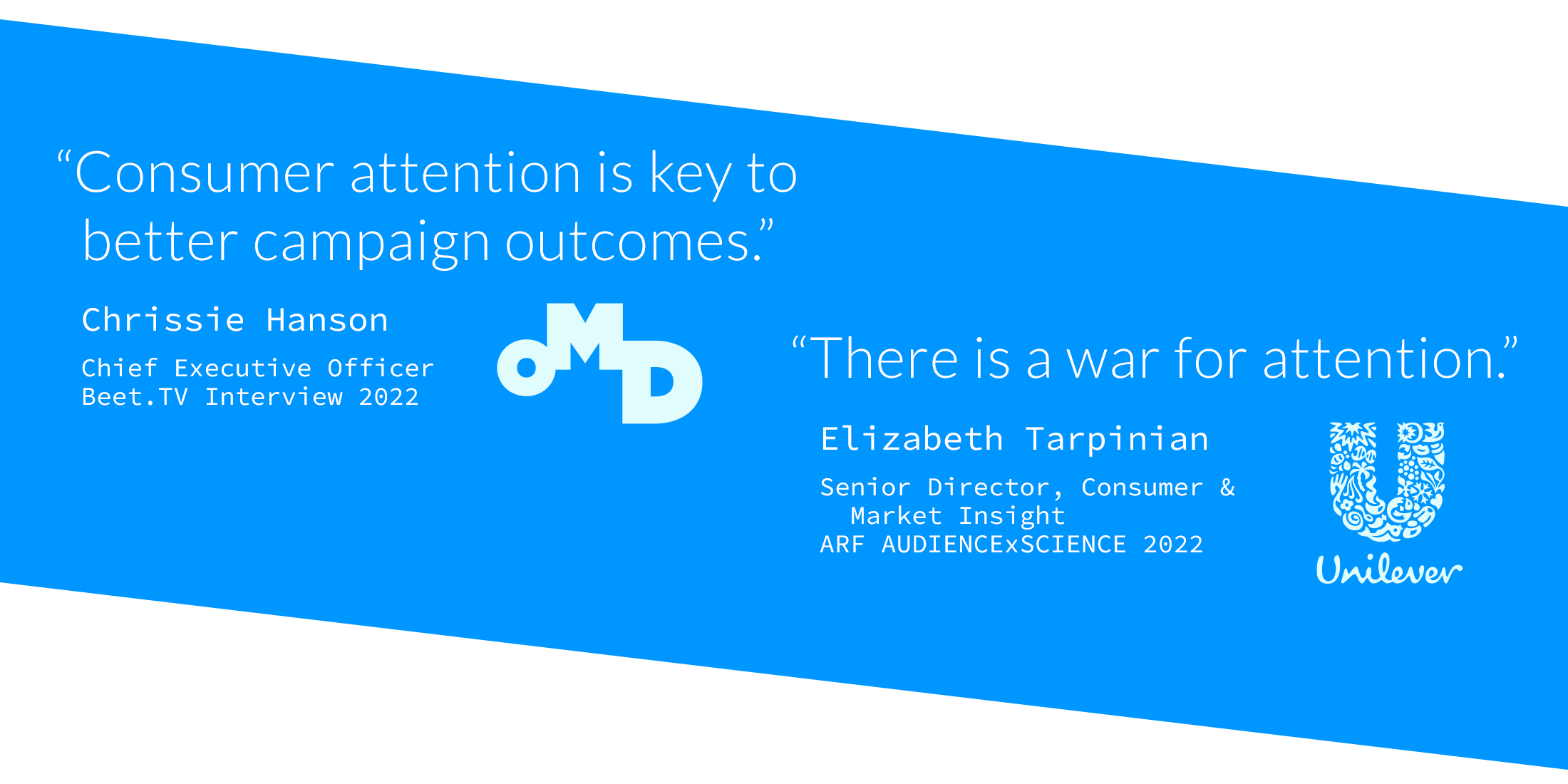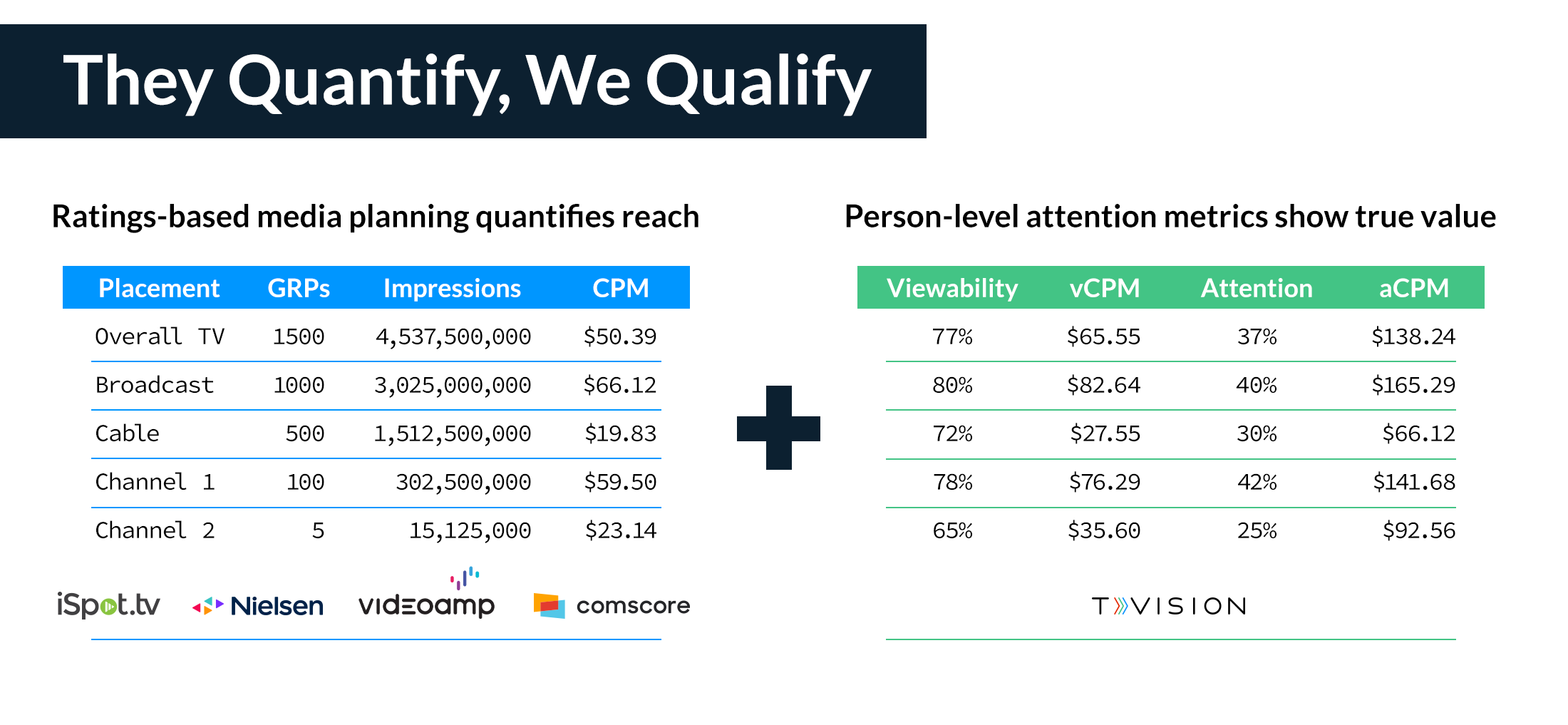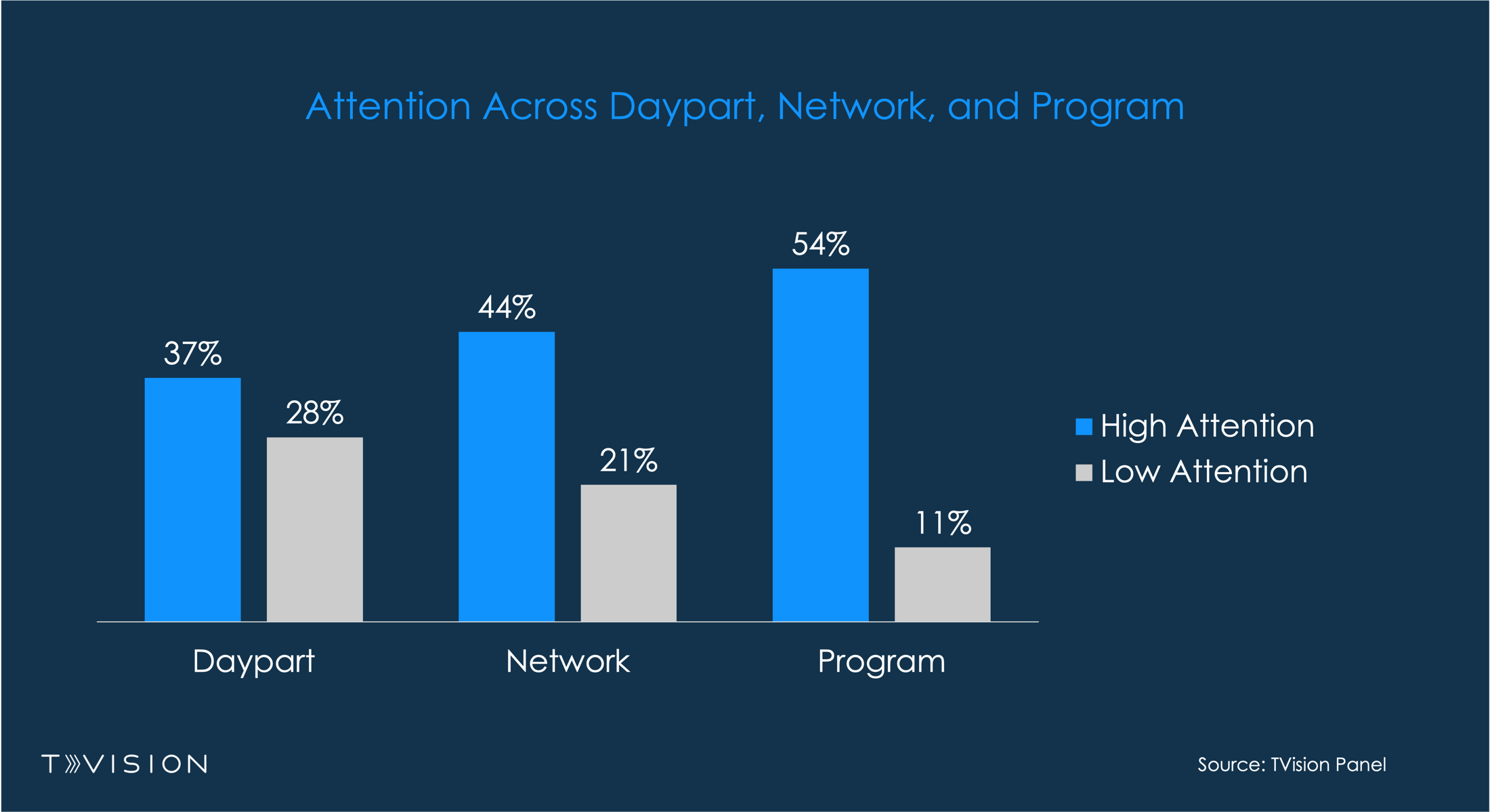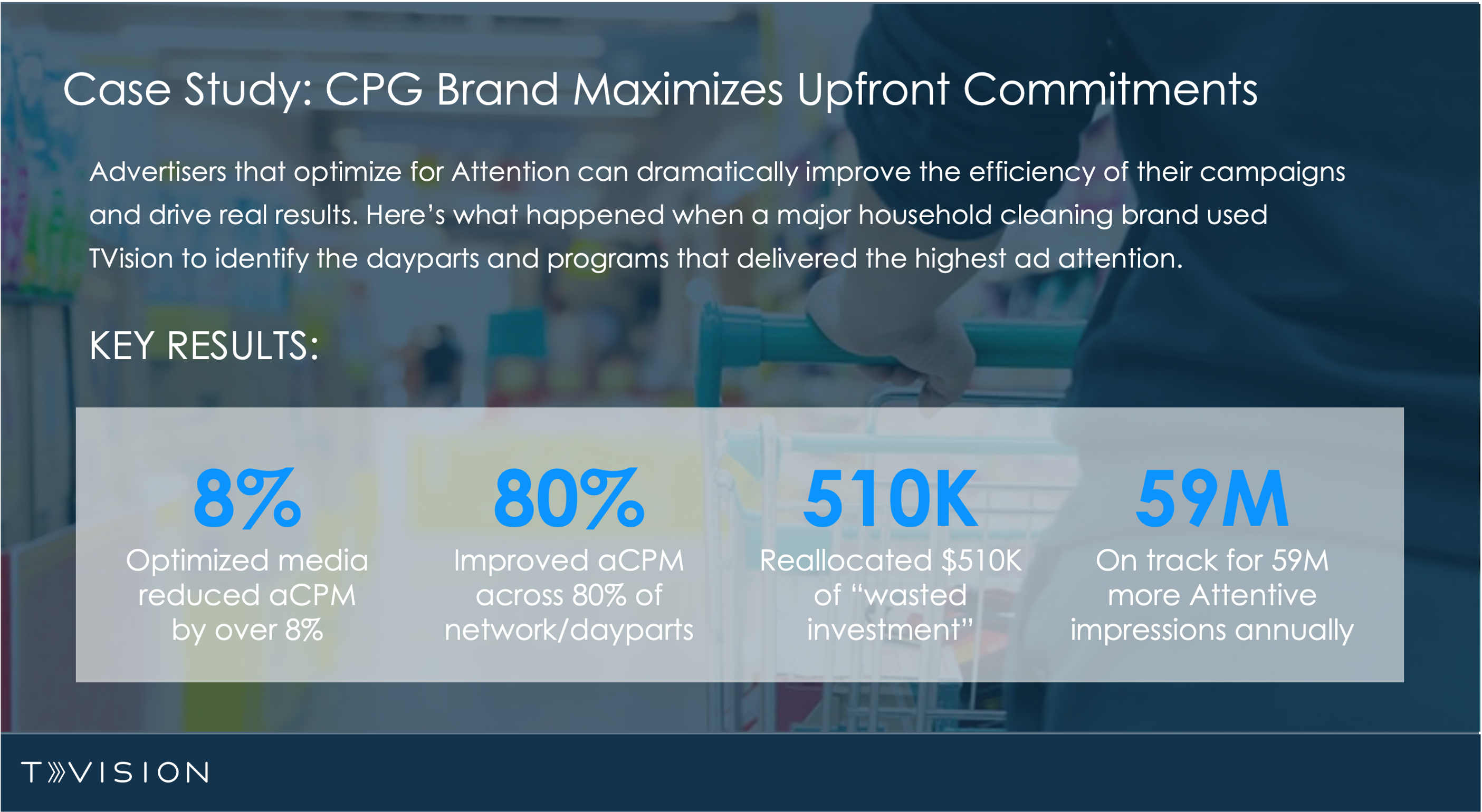There’s no question: the way we consume media has and is rapidly evolving. However, TV measurement standards have remained largely unchanged since the advent of ratings in 1950. That’s why we at TVision have taken it upon ourselves to help modernize TV measurement. By measuring and valuing observed consumer attention and engagement, we’re bringing the detailed, value-based insights available (and broadly adopted) across digital media to the TV measurement landscape.
With Attention a relatively new metric to the TV ecosystem, we often get questions around what we mean by Attention exactly, how we capture and measure it, and where we fit into the shifting measurement landscape. These kinds of questions regularly come up in the RFIs our agency partnerships team receives from those eager to learn and adopt innovative approaches to benefit their brands. As we continue to educate the market on what we do, how we do it, and why attention matters, I thought it would be helpful to compile the top five most frequently asked RFI questions and their respective answers. Let’s get to it…
TVision reports Attention by measuring the amount of time that viewers were engaged with the ads with their eyes on the TV screen. Our attention measurement requires the viewer to have had their eyes on the screen for two or more seconds to be considered an attentive impression. This panel-based, passive measurement is unique to TVision and captured through our proprietary, in-home technology. In a world where people are constantly multitasking while watching TV, capturing and keeping the consumer’s attention should be a priority for any advertiser.

It’s important to note that TVision also reports on Ad Viewability, which measures if there is someone in the room (or better yet, multiple people) when the ad is being delivered. While advertisers can influence Attention through savvy media planning and strong creative, networks and CTV apps have more sway over Viewability. In addition to Attention, Viewability is an important metric for marketers to consider in their plans.
There's a 1:1 correlation between Attention and Brand Lift. Check out TVision and Upwave’s new study to learn more.
In today’s market, ratings in Linear TV, and impressions in CTV are the primary currencies for quantifying the number of people who are exposed to an ad. As new alternative Linear TV currencies are developed, TVision data can be universally applied on top of ratings-based data to help advertisers understand the true value of media opportunities.

In the future, we think there may be room for multiple currencies, primary and secondary, including those that are focused on the value that ads deliver. Attention could and should be one of these future currencies. In the meantime, it can be used to supplement the primary currency because ratings alone don’t mean people are in the room, paying attention.
Case in point, our data shows that Attention varies dramatically across dayparts, networks, and programming. In fact, there are programs across all dayparts that deliver higher attention, and usually at lower costs, than some primetime spots. By layering TVision’s person-level engagement data on top of ratings, advertisers can find shows that truly deliver on the promise of a large and captivated audience.

There are several ways to take action with Attention data, but one of the easiest places to start is adding our aCPM to your current workflow to compare true costs and value across media.
Attentive CPM (aCPM) combines the viewer’s average Attention with the cost per thousand impressions of media. When brands optimize their campaigns for Attention, every incremental improvement translates to significant efficiency gains and greater value from their ad investments. Here is an example of how one of our clients did just that using TVision’s TV Planning & Measurement solution.

The importance of this increased Attention cannot be understated. Since ads work best when people pay attention, factoring Attention into media plans and media valuations can help marketers uncover value and make better decisions in a market of rising rates.
Absolutely. TVision makes it easy to incorporate our insights into TV viewing behavior into your data stack via simple and reliable data feeds that provide a full picture of actual TV viewership and engagement across both linear and CTV. What’s more, our data reporting is faster than TV is used to. TV viewing behavior we observe on Monday can be reported by Thursday--allowing marketers to make in-flight adjustments to improve the outcome of their campaigns. For agencies and brands who want to avoid adding yet another tool to their tech stack, our data can be ingested and is easy to interpret and act on. Learn more on our Data Licensing page.
TVision captures CTV viewing the exact same way we report on linear TV: through our single-source panel. TVision’s demographically representative, passive TV measurement panel captures accurate, person-level insight into how people really watch both linear and CTV. It also means marketers aren’t required to add yet another tag. Easy, privacy-safe, and driving both transparency and ROI across the CTV landscape.
Download our latest State of CTV Advertising Report for the biggest trends in viewer engagement that are shaping the future of the TV industry.